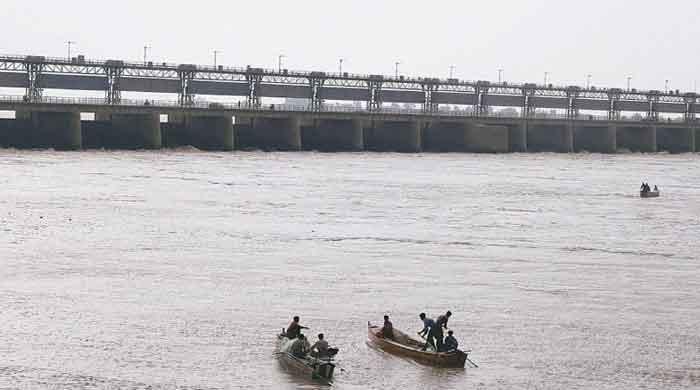Water Distribution Dispute: Punjab Accuses Sindh of Exceeding Share
- Punjab has reported a 43% water shortage declared for early Kharif 2025.
- Irsa has been asked to ensure correct reporting from Sindh barrages.
- Punjab alleges Sindh is utilizing surplus water and underreporting at its barrages.
The Punjab government has called upon the Indus River System Authority (IRSA) to guarantee equitable water distribution among all provinces. They allege that Sindh province is extracting more than its agreed-upon share of water, which they describe as a clear violation.
In a letter issued on April 9, 2025, the Punjab government stated that IRSA had announced a significant 43% water shortage for the early Kharif season of 2025, allocating only 6.702 million acre-feet (MAF) to Punjab. This considerable reduction has sparked worries regarding water security and agricultural output in the province.
Efforts were made to reach out to Irsa for their input on the matter.
According to the Punjab Irrigation Department, the operational guidelines for the JC Zone during the early Kharif season of 2025 have been assessed. Releases from the Mangla Dam will be capped at 8,000 cusecs to ensure the dam reaches 60% capacity before June 30, 2025. However, Punjab is encountering substantial hurdles in accessing its allotted water share.
Despite the declared shortage, Sindh province has reportedly been drawing water beyond its entitled allocation, thereby intensifying water scarcity in Punjab. Furthermore, reports of underreporting at Sindh barrages have fueled apprehensions about the reliability of water distribution data. The Irrigation Department has implored Irsa to enforce precise and transparent reporting from all Sindh barrages and to diligently oversee water shares during the early Kharif period.
Punjab has also sought the activation of the CJ and TP link canals to gain access to its rightful share from the Indus River. The letter emphasizes that the water crisis in Punjab has reached a critical juncture, posing a threat of widespread unrest and economic difficulties, necessitating immediate and resolute intervention. This includes reassessing shares, ensuring transparent reporting, and halting what they deem unwarranted downstream Kotri releases.
Punjab’s primary demands include ensuring fair and transparent water distribution among provinces and providing Punjab’s allocated water share without reductions or delays. They also insist on operating the CJ and TP link canals strictly in accordance with Punjab’s requirements and call for Irsa to investigate and rectify the underreporting of water discharge at Sindh barrages. The Irrigation Department has stressed that the situation requires urgent attention from authorities to avert further escalation of the water crisis in Punjab.
During the Irsa Advisory Committee Meeting for Rabi 2024-25, a 16% shortfall was announced for both Punjab and Sindh. However, by the end of the Rabi 2024-25 season, Sindh province received canal water with a 19% shortage, while Punjab experienced a 22% shortage. Moreover, Irsa made no provision for supplying water downstream of the Kotri barrage throughout the Rabi 2024-25 season. Sindh Irrigation Department released 0.470 MAF of water below the Kotri barrage, despite significant canal water supply shortages in Punjab.
Additionally, an Irsa representative inspected Sindh barrages on February 15, 2025, discovering that the Rice Canal was operating at 936 cusecs, despite Sindh Irrigation Department reporting it as ‘closed’ on the same date. Similarly, the Dadu canal was running at 1,226 cusecs against the reported discharge of 950 cusecs, revealing a discrepancy of 276 cusecs.
Punjab contends that these facts unequivocally demonstrate that Sindh is utilizing surplus water and engaging in underreporting at its barrages, directly impacting the share of other provinces, especially Punjab, as they are the only provinces sharing canal water supply shortages.



Comments (0)
No comments yet. Be the first to comment!
Leave a Comment